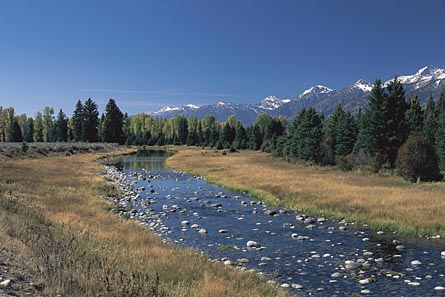Costs of Choked-Up Waters
Anyone who’s enjoyed cavorting in streams or lakes has noted the buildup of skuzzy greenish slime and algae around the shore and within calm regions. A little is unattractive and a bit unpleasant to walk and swim in. But when this algal growth mushrooms in abundance, water quality plummets. Affected waters can develop off-tastes and bad smells. Fish can become sickened or die from temporary oxygen starvation. And surface algal blooms can actually manufacture poisons.

To say this is gross seriously understates the problem.
That’s because beyond the yuck factor, there are substantial economic costs associated with this nastiness. How big? Think upwards of $2 billion a year in the United States alone, according to researchers at Kansas State University. Environmental Science & Technology released a paper online by the team, last night, which attempts to calculate the financial implications of eutrophication — the overgrowth of aquatic plants and algae that ultimately degrade waters, in part by filtering light or sucking the oxygen out of large shares of these environments.
Yes, fertilizers are good. But too much of a good thing can be toxic. Think of it as forcing our aquatic systems to overeat to the point of morbid obesity.
To be honest, the KSU researchers didn’t actually measure eutrophication. Instead, they quantified how much phosphorus and nitrogen were entering waters across the United States. Human and animal wastes supply waters with these nutrients. So does the rainwater runoff of fertilizers from croplands or urban lawns and parks. Together, the fertilizing pollutants fuel the growth of everything from crop plants and weeds to algae. So it’s no surprise that where excess fertilization of water occurs, eutrophication usually follows.
Walter K. Dodds and his colleagues collected data on nitrogen from almost 1,600 sampling sites across the nation and phosphorus values from more than 10,000 such sites. They compared summer values, when eutrophication risks are highest, to background values of those fertilizing nutrients collected more than five years earlier.
In virtually 100 percent of the rivers, for instance, nitrogen and phosphorus values were much higher in the most recent summer sampling data than in the earlier reference data. Two notable exceptions: the Willamette and Central Valleys of the Pacific Northwest and a region referred to as the western forested mountains. In these areas, a mere 76 and 65 percent of rivers and lakes, respectively, were higher now in the fertilizing nutrients than in the earlier reference samples.
In general, Dodds’ group says, “We expect that the degree of eutrophication documented in the U.S. represents a global phenomenon” and that even for the U.S. estimates, any cost tallies are “probably conservative.”
As to how they stack up, the KSU researchers estimate that losses in recreational use of the waters (swimmers and skiers too grossed out to jump in or anglers not anxious to pull fish from some nasty-smelling, algae-covered lake) could exceed $1 billion a year. Diminished value of waterfront property due to eutrophic waters was estimated to range from $300,000 to $2.8 billion per year. Conservative costs of cleaning up drinking water that’s been impaired by eutrophication exceeds $800,000 per year. And even the costs of trying to save threatened and endangered species living in oxygen-starved waters could cost some $45 million a year.
Now some of the eutrophication can’t be avoided. But how many people fertilize their lawn right before a heavy rain? Count on it: Much of what was applied is now running down the street into storm drains or across parklands into lakes and rivers. Farmers need to also pay more attention to how and when they apply fertilizers. And everyone would do well — at least outside the arid West — to consider collecting rainwater in barrels to parse out slowly in post-storm days.
Pollutants applied to our properties can travel dozens of miles — in some cases hundreds of miles — to impair the quality of downstream waters. In these tight economic times, we don’t need to needlessly wrack up more collective national debt out of ignorance.
Let’s do what we can to clean up our act.






